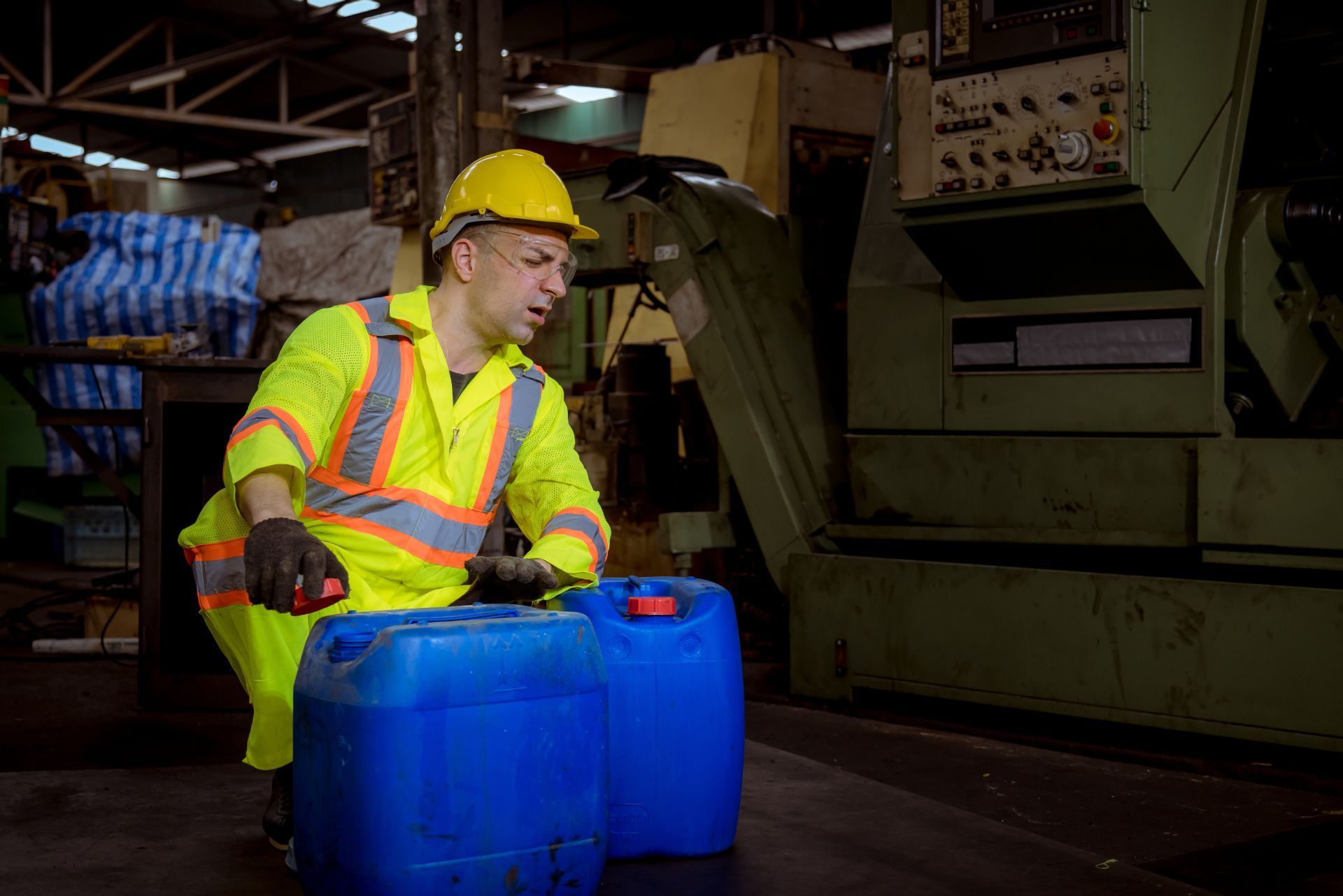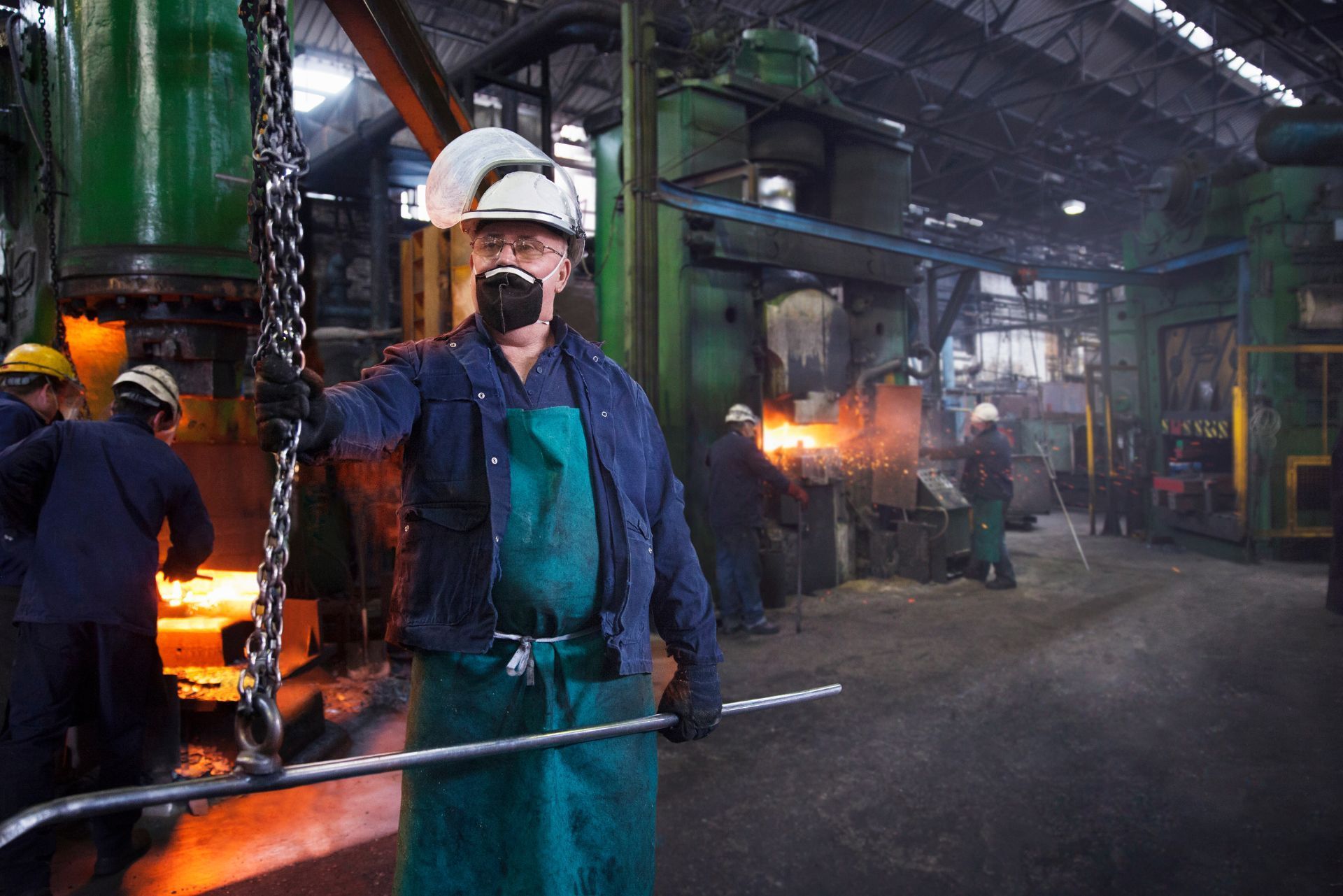Email us today!
Index
Contact Us
Phone
(248) 647-2500
hello@oaklandinsurance.com
Location
8055 Ortonville Rd, City of the Village of Clarkston, MI 48348
High hazard manufacturing involves operations that pose a significant risk to workers, the environment, and property. Such manufacturers must take proactive steps to address potential hazards and protect their business from potential losses. One crucial aspect of risk management for high hazard manufacturers is
obtaining adequate insurance coverage. In this article, we will explore the various types of insurance that high hazard manufacturers should consider, and the factors they need to take into account when choosing insurance policies.
Understanding High Hazard Manufacturing
High hazard manufacturing refers to industries that deal with potentially dangerous materials, equipment, or processes. These industries often involve the production of chemicals, explosives, or flammable substances, as well as activities like the processing of oil or natural gas. The nature of their operations puts high hazard manufacturers at an increased risk of accidents, fires, explosions, and major property damage.
High hazard manufacturing encompasses a wide range of sectors, including but not limited to chemical manufacturing, pharmaceutical production, oil refining, and mining. Each of these industries has its own unique set of hazards and risks, requiring specialized safety protocols and risk management strategies.
Chemical manufacturing, for example, involves the production of various chemicals that can be highly reactive or toxic. These chemicals may be used as raw materials for other industries or as end products themselves. The manufacturing process often involves handling and processing these chemicals in large quantities, which increases the potential for accidents and incidents.
Explosives manufacturing, on the other hand, deals with the production of materials that are designed to detonate or combust rapidly. These materials are commonly used in mining, construction, and military applications. The manufacturing process requires strict adherence to safety protocols to prevent accidental explosions and ensure the proper storage and transportation of explosives.
Oil refining and natural gas processing are also considered high hazard manufacturing activities. These industries involve the extraction, purification, and transformation of crude oil and natural gas into various products, such as gasoline, diesel, and petrochemicals. The processes used in these industries, such as distillation, cracking, and fractionation, involve high temperatures and pressures, making them inherently risky.
Risks Associated with High Hazard Manufacturing
The risks associated with high hazard manufacturing can be catastrophic, impacting not only the company's operations but also the health and safety of its employees and the environment. These risks may include accidental releases of hazardous substances, equipment malfunctions, fires, explosions, and workplace injuries. Additionally, high hazard manufacturers could face significant financial implications due to property damage, business interruptions, the cost of legal claims, and regulatory penalties.
Accidental releases of hazardous substances can occur due to equipment failures, human errors, or natural disasters. These releases can lead to the contamination of air, water, and soil, posing serious health risks to nearby communities and ecosystems. The cleanup and remediation efforts required to mitigate the environmental impact of such releases can be extensive and costly.
Equipment malfunctions are another common risk in high hazard manufacturing. The failure of critical equipment, such as pressure vessels, pumps, or control systems, can result in process disruptions, loss of production, and potential safety hazards. Regular maintenance, inspections, and testing are essential to minimize the likelihood of equipment failures and ensure the safe operation of manufacturing facilities.
Fires and explosions are perhaps the most severe risks associated with high hazard manufacturing. The presence of flammable materials, combined with potential ignition sources, creates a volatile environment that can lead to devastating incidents. These incidents can result in injuries, fatalities, and extensive property damage. Implementing robust fire prevention and protection measures, such as fire suppression systems, explosion-proof equipment, and emergency response plans, is crucial to minimize the impact of such events.
Workplace injuries are also a significant concern in high hazard manufacturing. The handling of dangerous substances, operation of heavy machinery, and exposure to hazardous environments increase the likelihood of accidents and injuries. Employers must prioritize employee training, provide personal protective equipment, and enforce strict safety protocols to reduce the risk of workplace incidents.
Furthermore, high hazard manufacturers face potential financial implications due to the risks associated with their operations. Property damage resulting from accidents or disasters can be costly to repair or replace. Business interruptions caused by incidents may lead to production delays, loss of revenue, and damage to the company's reputation. Legal claims and regulatory penalties can further strain the financial resources of high hazard manufacturers, making risk management and compliance crucial aspects of their operations.

Importance of Insurance in High Hazard Manufacturing
High hazard manufacturing industries face unique challenges and risks that require careful consideration and planning. One of the most crucial aspects of risk management in these industries is insurance coverage. Insurance plays a vital role in providing financial protection and ensuring the sustainability of high hazard manufacturers.
Role of Insurance in Risk Management
Insurance acts as a safety net for high hazard manufacturers, offering them peace of mind in the face of potential risks and uncertainties. Accidents, fires, and other unforeseen events can have devastating consequences for these industries, leading to property damage, bodily injuries, and even environmental hazards. However, with the right insurance coverage in place, manufacturers can mitigate the potential impact of such incidents on their operations, employees, and the surrounding community.
Insurance policies tailored specifically for high hazard manufacturing industries can help cover the costs associated with property damage, including repairs or replacements of equipment and infrastructure. In the unfortunate event of bodily injuries, insurance coverage can assist in providing compensation for medical expenses, rehabilitation, and lost wages. Additionally, insurance can also help manufacturers navigate the legal complexities that may arise from accidents, ensuring that they have the necessary resources to cover legal fees and potential settlements.
Furthermore, high hazard manufacturing industries often have to contend with environmental risks. In the event of an environmental accident or contamination, insurance coverage can help finance the necessary cleanup and remediation efforts. This not only protects the company's financial stability but also demonstrates a commitment to environmental responsibility and sustainability.
Financial Implications of Insufficient Coverage
While insurance provides a safety net for high hazard manufacturers, insufficient coverage can have severe financial implications. Without adequate protection, companies may find themselves responsible for paying substantial amounts out of pocket in the event of a loss or accident. These expenses can quickly add up, potentially jeopardizing the company's financial stability and long-term viability.
Moreover, insufficient insurance coverage can hinder the company's ability to recover from significant setbacks and resume normal operations in a timely manner. The financial burden of repairing or replacing damaged equipment, infrastructure, and property can be overwhelming without the support of insurance. This can lead to prolonged downtime, loss of productivity, and a decline in market competitiveness.
Additionally, high hazard manufacturers may face legal consequences and potential lawsuits in the aftermath of accidents or incidents. Inadequate insurance coverage can leave companies vulnerable to substantial legal fees, settlements, and damage awards. These financial burdens can further strain the company's resources and hinder its ability to bounce back from adversity.
In conclusion, insurance is an essential component of risk management for high hazard manufacturing industries. It provides financial protection, mitigates potential risks, and ensures the sustainability of these industries. By investing in comprehensive insurance coverage, manufacturers can safeguard their operations, protect their employees, and demonstrate their commitment to responsible and sustainable practices.
Types of Insurance for High Hazard Manufacturers
High hazard manufacturers face unique risks that require specialized insurance coverage to protect their business, employees, and assets. In addition to general liability insurance, there are several other types of insurance that are essential for high hazard manufacturers:
General Liability Insurance
General liability insurance is a fundamental coverage for all manufacturers, including high hazard manufacturers. It protects against claims of bodily injury or property damage caused by the company's products, operations, or premises. This insurance can help cover legal fees, settlements, and judgments resulting from lawsuits or liability claims. General liability insurance is essential in safeguarding high hazard manufacturers against third-party liability risks.
Workers Compensation Insurance
High hazard manufacturing environments pose increased risks to employees. Therefore, workers compensation insurance is crucial for high hazard manufacturers as it provides coverage for employees who suffer work-related injuries or illnesses. This insurance covers medical expenses, lost wages, and rehabilitation costs for injured workers. Given the higher risks associated with high hazard manufacturing, this coverage is indispensable in protecting employees and complying with legal and regulatory requirements.
In addition to providing financial support to injured workers, workers compensation insurance also offers benefits to employers. By having this coverage, high hazard manufacturers can minimize the risk of costly lawsuits resulting from workplace injuries and ensure that employees receive the necessary medical care and support to recover.
Property Insurance
High hazard manufacturers heavily rely on their physical assets, including buildings, equipment, and inventory, to carry out their operations. Therefore, property insurance is essential for high hazard manufacturers to protect these assets from perils such as fire, explosions, or natural disasters.
Property insurance provides compensation for repair or replacement costs in the event of damages caused by covered perils. It also covers the loss of inventory and equipment, ensuring that high hazard manufacturers can quickly recover from property-related losses and resume their operations. With property insurance in place, high hazard manufacturers can have peace of mind knowing that their valuable assets are protected.
Business Interruption Insurance
High hazard manufacturers face the risk of significant interruptions in their operations due to unforeseen events such as fires, explosions, or other disasters. Business interruption insurance is designed to protect high hazard manufacturers from the financial losses incurred due to such interruptions.
If a covered event forces the company to suspend or reduce its operations, business interruption insurance can provide compensation for lost income, ongoing expenses, and any additional costs associated with resuming normal business activities. This coverage ensures that high hazard manufacturers can overcome the financial challenges caused by interruptions and continue their operations without significant disruptions.
Furthermore, business interruption insurance can also cover the costs of temporary relocation or renting alternative facilities, allowing high hazard manufacturers to continue serving their customers and fulfilling their commitments even during challenging times.
In conclusion, high hazard manufacturers require specialized insurance coverage to mitigate the unique risks they face. General liability insurance, workers compensation insurance, property insurance, and business interruption insurance are all crucial in protecting high hazard manufacturers from various liabilities, ensuring the well-being of their employees, safeguarding their physical assets, and providing financial support during interruptions. By having these insurance policies in place, high hazard manufacturers can focus on their core operations with confidence, knowing that they are adequately protected.

Factors to Consider When Choosing Insurance
Assessing Your Risk Profile
High hazard manufacturers must carefully evaluate their specific risk profile before selecting insurance policies. This evaluation involves identifying the potential hazards associated with their specific operations, assessing the likelihood and severity of potential losses, and understanding any legal or regulatory requirements applicable to their industry. By understanding their risk profile, manufacturers can choose insurance coverage that adequately addresses their unique needs.
Understanding Policy Terms and Conditions
It is crucial for high hazard manufacturers to thoroughly understand the terms and conditions of insurance policies before making a decision. Each policy will have its own limitations, exclusions, and requirements that must be considered. Manufacturers should pay particular attention to coverage limits, deductibles, and any endorsements or additional coverages that may be relevant to their operations. Working closely with an experienced insurance broker or agent can help ensure that all policy details are well understood.
Evaluating Insurance Providers
When selecting insurance for high hazard manufacturing, it is essential to choose a reputable insurance provider with experience in the industry. Manufacturers should evaluate insurers based on their financial stability, claims handling reputation, and customer service record. It is advisable to gather quotes from multiple providers and compare the coverage and costs of various policies to make an informed decision.
In conclusion, high hazard manufacturers face unique risks due to the nature of their operations. Obtaining appropriate insurance coverage is crucial for mitigating these risks and protecting the company's assets, employees, and financial stability. By understanding the various types of insurance available and considering their specific risk profile, high hazard manufacturers can make informed decisions when choosing insurance policies. Working with experienced professionals in the insurance industry will help ensure that manufacturers obtain the necessary coverage to safeguard their operations and meet their obligations.
REQUEST A QUOTE
Speak with a high hazard manufacturer insurance specialist today!
Get started today!
Prefer to speak with an agent now?







